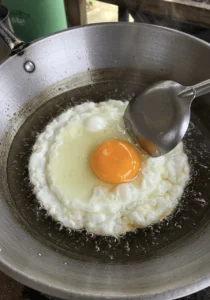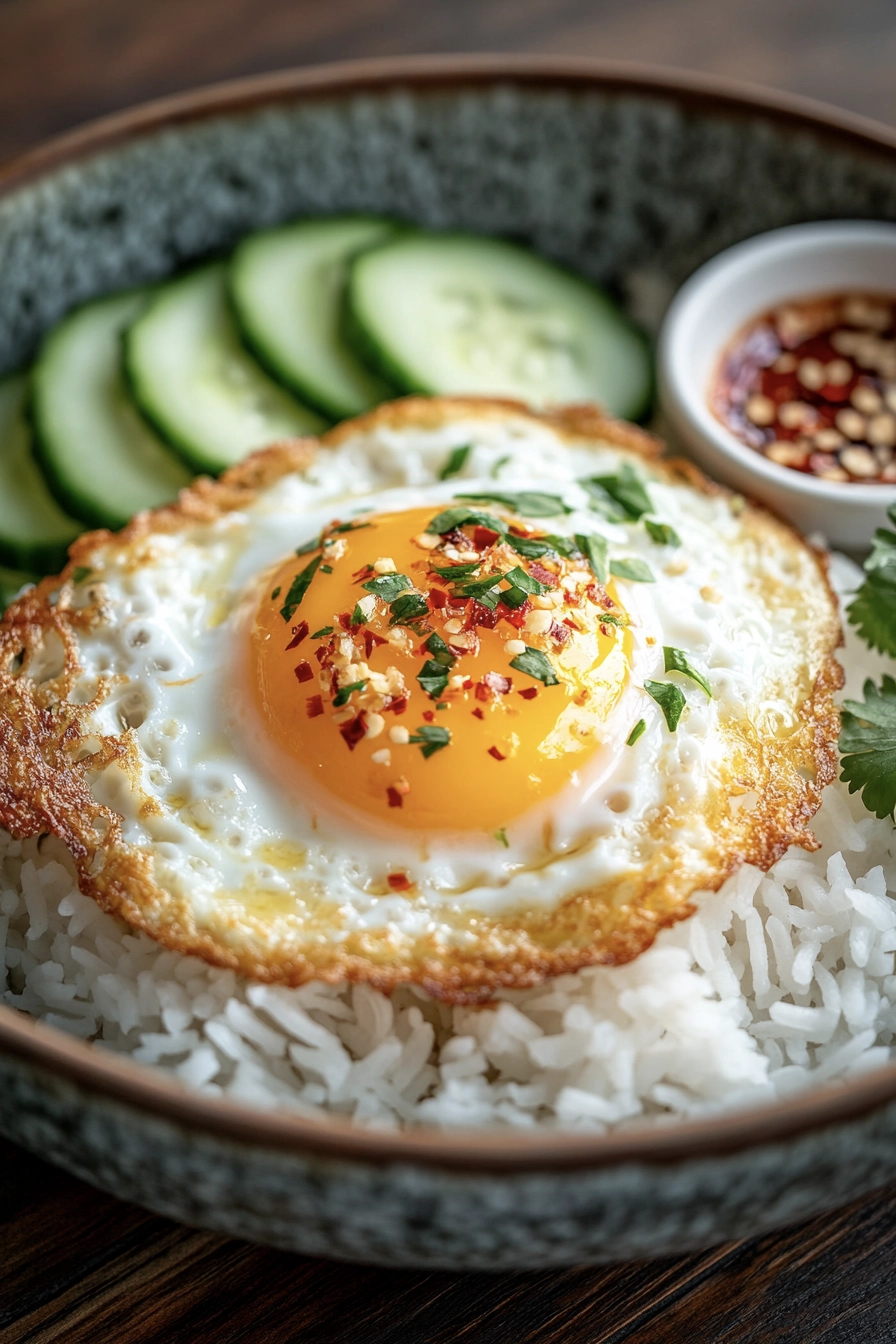Ingredients
Equipment
Method
How to Make It (Traditional Wok Method)
Heat the Oil
- In a wok or small skillet, heat 2–3 tablespoons of oil over medium-high to high heat until shimmering and just starting to smoke.
- The oil should be very hot — like shallow frying, not just greasing the pan.
Crack the Egg In
- Crack the egg into a small bowl (to control placement), then carefully slide it into the hot oil.
- It will sizzle violently and bubble up immediately — that’s good! Don’t move it.
Fry Without Flipping
- Let the egg fry for about 45 seconds to 1 minute, until the edges puff and turn golden brown and crispy.

- Tilt the pan slightly and use a spoon to baste hot oil over the whites if they’re taking longer to set.
- Don’t flip — the yolk stays runny (unless you want it cooked through, which is also fine).

Remove and Drain
- Use a slotted spatula or spoon to lift the egg out of the oil and transfer to a paper towel-lined plate.
- Sprinkle with a pinch of salt or drizzle with fish sauce for Thai authenticity.
Alternate Cooking Method (Flat Pan)
If you don’t have a wok:
- Use a small nonstick or carbon steel skillet, heat 2–3 tbsp oil on high
- Fry just like above, keeping oil depth enough to allow bubbling edges
- Works great with one egg at a time!
Nutrition
Notes
What to Serve With Thai Fried Eggs
Thai-style fried eggs are traditionally served over:
1 tbsp fish sauce + 1 chopped Thai chili + squeeze of lime
Sweet Soy Chili Sauce:
1 tbsp soy sauce + 1 tsp sugar + splash of vinegar + minced garlic
Bang Bang Twist:
Mix 2 tbsp mayo + 1 tbsp sweet chili sauce + squeeze of lime — and drizzle on your egg like a wild fusion brunch topping! Pro Tips
- Jasmine rice
- With Pad Krapow (Thai basil chicken or pork) — a classic combo
- Garlic stir-fried veggies or chili-fried tofu
- Drizzled with a little nam pla prik (fish sauce + chili + lime)
- Or make a Bangkok-style breakfast:
- Steamed rice
- Fried egg
- Sriracha + Maggi sauce on the side
- Cucumber slices and crispy shallots
1 tbsp fish sauce + 1 chopped Thai chili + squeeze of lime
Sweet Soy Chili Sauce:
1 tbsp soy sauce + 1 tsp sugar + splash of vinegar + minced garlic
Bang Bang Twist:
Mix 2 tbsp mayo + 1 tbsp sweet chili sauce + squeeze of lime — and drizzle on your egg like a wild fusion brunch topping! Pro Tips
- Use high heat and enough oil. You’re not just frying, you’re shallow-frying.
- Room temperature eggs puff more dramatically than cold ones.
- Don’t crowd the pan. Cook one at a time for best results.
- Crispy edge lovers: You can even spoon hot oil over the yolk to “set” it while keeping it jammy inside
